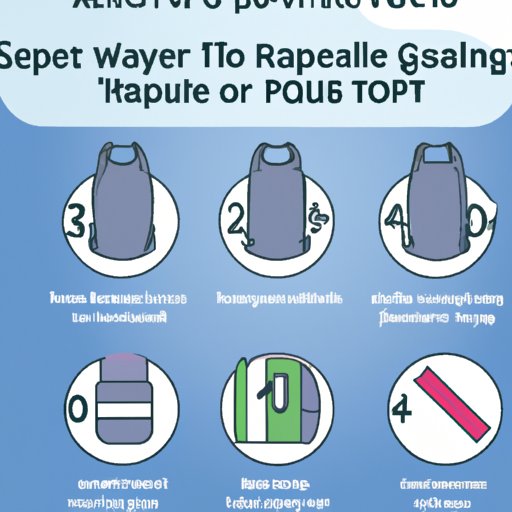Introduction
Planning an upcoming trip can be both exciting and overwhelming. There are so many details to consider and manage, from booking flights to packing your bags. One of the most important things to consider is what to bring as your carry-on bag. Many people opt for a backpack since it’s easy to carry and offers plenty of storage space. But does a backpack count as a carry-on? This article will explore this question in detail.
Comparison of Backpack Sizes vs Airport Carry-On Restrictions
The first step in determining whether or not a backpack can be used as a carry-on is to understand the standard airline carry-on restrictions. Most airlines have a set size limit for carry-on luggage, usually around 22″ x 14″ x 9″. Different airlines may have slightly different restrictions, so it’s important to check the specific restrictions for the airline you’re flying with. It’s also important to understand how to measure a backpack for carry-on use. The best way to do this is to measure the length, width, and depth of the bag when it’s fully packed. This will give you an accurate idea of how much space the bag will take up in the overhead bin.
When it comes to backpacks, there are a variety of sizes and styles to choose from. From small daypack backpacks to larger hiking packs, there is something for everyone. It’s important to remember that even though a backpack may seem small, it can still exceed the size requirements for carry-on luggage. For example, a small daypack might measure 17″ x 12″ x 7″, which is well within the size restrictions for most airlines. However, a larger hiking pack might measure 24″ x 16″ x 10″, which exceeds the size limit for most airlines.
Top Tips for Packing Lightly with a Backpack as Your Carry-On
Once you’ve determined that your backpack meets the size requirements for carry-on luggage, there are several tips you can follow to make sure you’re packing lightly and efficiently. First, choose the right bag. If you’re only going on a short trip, a smaller backpack will be more than enough. For longer trips, you might want to consider a larger bag with multiple compartments. Second, make a list of what you need to bring. This will help you stay organized and avoid overpacking. Third, pack smartly by placing heavier items at the bottom of the bag and lighter items at the top. Fourth, roll your clothes instead of folding them. This will save space and prevent wrinkles. Finally, if possible, wear your bulkiest items on the plane to save space in your bag.
Pros and Cons of Using a Backpack as Your Air Travel Carry-On
Using a backpack as your carry-on has its advantages and disadvantages. On the plus side, a backpack allows you to keep your hands free while navigating through the airport. Additionally, a backpack offers plenty of storage space and can easily fit under the seat in front of you. On the downside, backpacks can be bulky and difficult to carry for extended periods of time. They also don’t provide the same level of organization as traditional suitcases.
Questions to Ask Yourself Before Choosing a Backpack as Your Carry-On
Before you choose a backpack as your carry-on, there are a few questions you should ask yourself. What is your budget? Backpacks come in a wide range of prices, so it’s important to determine how much you’re willing to spend. What features do you need in a backpack? Do you need pockets, compartments, or additional straps? And finally, what is the size limit? Make sure the backpack you choose meets the size requirements for carry-on luggage.
How to Pack a Carry-on Backpack for Maximum Efficiency
Once you’ve chosen the right backpack, it’s time to start packing. The key to packing a carry-on backpack efficiently is to organize your items into categories. Place larger items at the bottom of the bag and divide smaller items into compartments. Put heavy items close to your back to keep the weight balanced. Finally, make sure to leave some empty space in the bag for any souvenirs or items you may pick up on your trip.
Conclusion
In conclusion, a backpack can count as a carry-on if it meets the size requirements for the airline you’re flying with. To make sure you’re packing lightly and efficiently, choose the right bag, make a list of what you need, pack smartly, and roll your clothes instead of folding them. Additionally, weigh the pros and cons of using a backpack as your carry-on and ask yourself the right questions before making your decision. With the right preparation and packing strategies, you can maximize the efficiency of your carry-on backpack and enjoy stress-free air travel.


